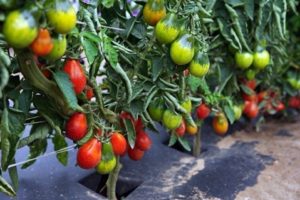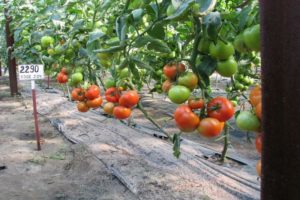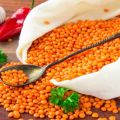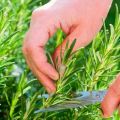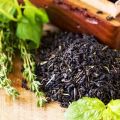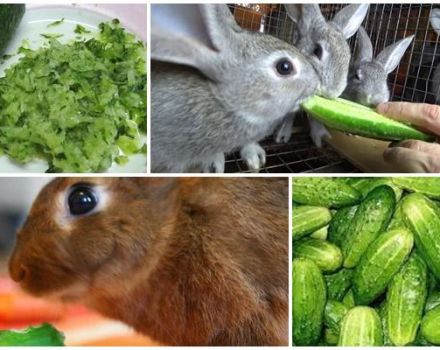Characteristics and description of tomato varieties Polar early ripening and Polyarnik, their yield
For the northern and central regions, breeders have created many good varieties. One of the most popular is the Polar early ripening tomato. Polyarnik is slightly inferior to him. Some confuse them, believing that these are two names for the same. In fact, these are different varieties. The differences relate to the timing of ripening, the size of the bush and other signs.
Ultra early ripening variety
Tomato variety Polar early ripening belongs to the ultra-early group. As the description on the seed package says, the period from full germination to the start of harvesting of commercial products is 99-105 days. The variety was bred for cultivation in the northern regions, but subsequently gained popularity throughout the country. Its main advantages: unpretentiousness, good fruit formation, stable yield both in dry and rainy years. From everyone who planted this variety, you can hear only good reviews.
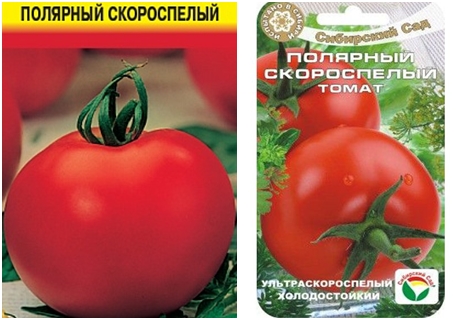
Adult bushes can withstand short-term cold snaps. Pollination and fruit setting, depending on weather conditions, can be either good or satisfactory, but the yield in any case is at least 4-5 kg / sq. m. With careful care and regular feeding from 1 sq. m. m it is possible to collect up to 7-8 kg of marketable products.
Tomato Polar early ripening forms standard bushes of determinant type, is characterized by compactness, weak foliage. The height of the main stem usually does not exceed 30-40 cm. The inflorescences are of the simple type, the first is formed above the 7th leaf, the next - after 1-2 pairs of leaves.
With good care, the fruits grow quite large, weighing up to 160 g, the consistency of tomatoes is fleshy, in shape they resemble an apple. The taste is sweet, with a slight sourness and a pronounced tomato aftertaste. Ripening ability is good. Tomatoes harvested in the blanche stage can be stored for 2-3 weeks, green ones - up to a month. Polar early ripening is good fresh and salted. Sauces, caviar, tomato, pasta, juice, mashed potatoes, assorted and other types of preservation are prepared from it.
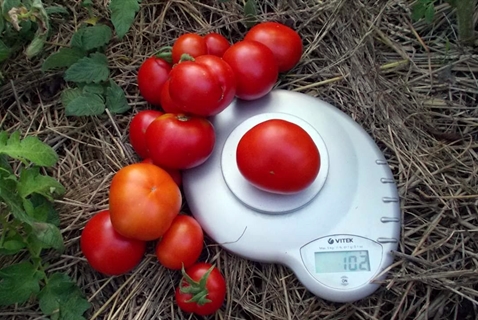
A favorite of gardeners
Tomato Polaris are well-deserved love of gardeners and gardeners. It belongs to the group of early ripening, yields 92-102 days after germination. Can be cultivated both open and closed ground. It works equally well with seedling and non-seedling cultivation. The bushes are semi-determinant, their height reaches 0.9-1.1 m. Tomatoes are formed weighing from 120 to 150 g. To get a good harvest, stepchildren must be partially removed.
Initially, this variety was grown in the northern regions and in Siberia.
The fruits have excellent taste and presentation, in dry matter there is an increased content of lycopene. The keeping quality characteristic is satisfactory. The variety is cold-resistant, the fruits are well tied in cold and damp weather, the plants can withstand short-term cold snaps up to +1 degrees. Ripe and blanche tomatoes are consumed fresh, they are made from various preserves, juice, puree and tomato.
Growth and development
These tomatoes are zoned for cultivation in the northern and central regions. The fact that they are not recommended to be planted in the south is due not to a whim of breeders, but to objective reasons. Like many northern varieties, these tomatoes form bushes with a small amount of foliage, located slightly sideways. This feature is needed then so that in a short northern summer, with a lack of sunny days, the fruits receive more light and can ripen.
In the south, under the scorching sun, a small area of foliage of the Polar precocious tomato variety will cause rapid aging of plants, and the harvest will not have time to form. This applies to varieties Polar precocious, Polarnik and many others, bred for harsh climatic conditions.
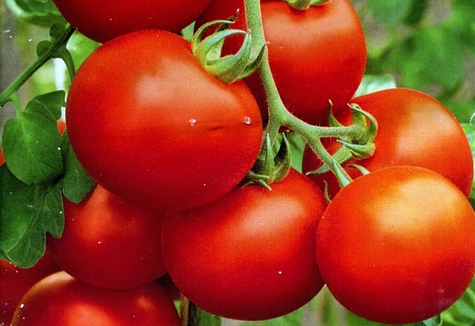
How to get a good harvest
The quantity and quality of the future harvest, as well as susceptibility to diseases and pests, depends on compliance with the rules of agricultural technology. The latter more often affect weak plants. Gardeners use different techniques to ensure good growth, development and amicable ripening of fruits. With proper care, there will be no pests on the tomato.
First you need to buy quality seeds. The packaging must be airtight, with the indicated expiration date, the seeds must be smooth, of characteristic size and color. Lightweight and puny seeds do not yield good yields. Having opened the bag, you need to pay attention to the presence of an unpleasant odor. If there is one, the planting material is not suitable.
Quality seeds are hardened at 0 ° C. To do this, they are placed outside or in a refrigerator, where they are kept for 15 hours. This procedure stimulates the processes inside the seeds, as a result, they germinate faster. The fruits ripen on average 10-14 days earlier. Seedling care is usual, but there is one feature: you cannot neglect feeding and save on growth stimulants. Early ripening varieties at a very early stage should receive everything they need, then in the future they will not lag behind in development.
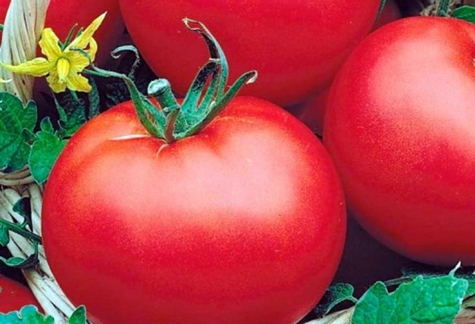
Seedling method
Seedling allows you to bring the harvest time closer to 5-10 days. First, the seeds are sown in containers, then they dive, and when warm weather sets in, they are planted in the ground.
Seedless way
The advantage of sowing directly to a permanent place is that the plants are stronger and more resistant to infections and pests. The harvest will ripen at the usual time. Swollen seeds are sown in holes of 3-4 pieces, until the emergence of shoots, the ground is kept moist. When the plants sprout and give 2-3 pairs of true leaves, the weak ones are removed, leaving one bush in the hole. Then they look after as usual. With the onset of cold weather, tomatoes are covered with a film or non-woven material.
